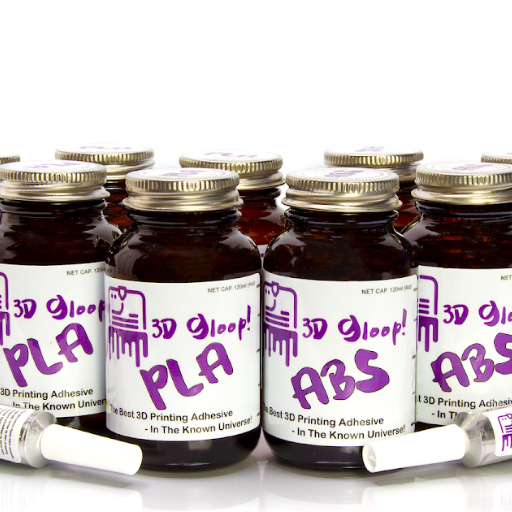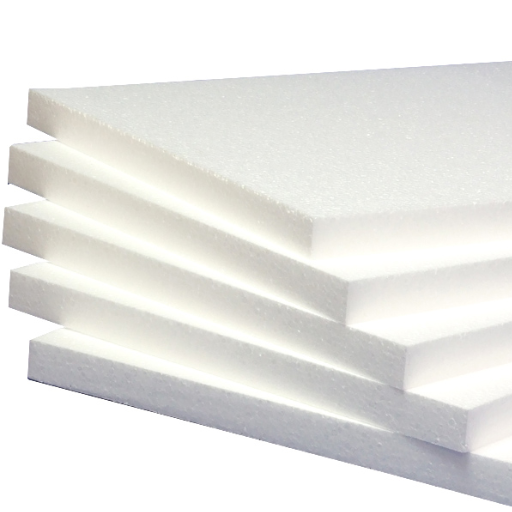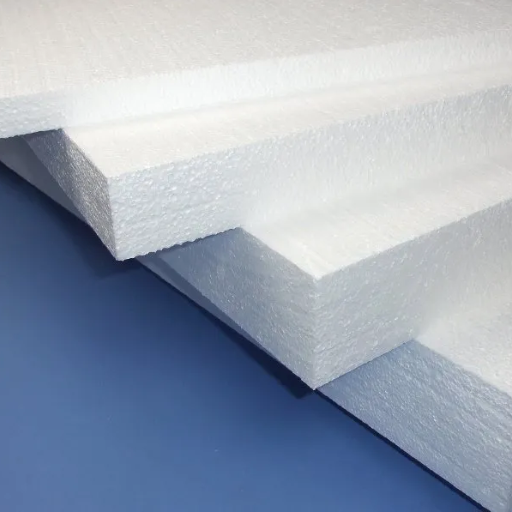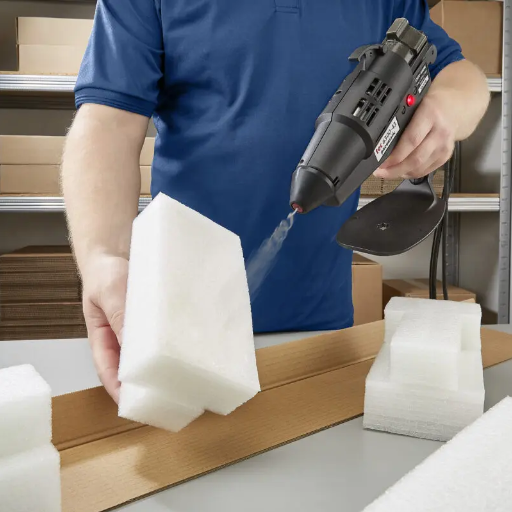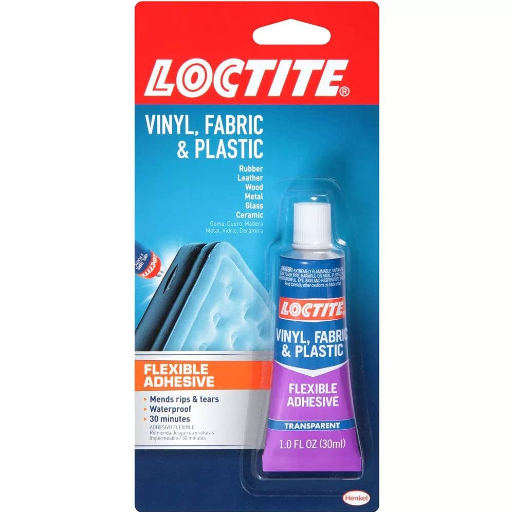Securing redundant parts together with PLA, which happens to be one of the leading materials used in 3D printing, can often become quite a challenge. Be it for assembling complex models multi-part models, or doing some post-printing enhancements on a model, the right adhesive is key to achieving a strong and seamless bond. This article covers the most effective glues and techniques tailored specifically for bonding PLA, so you do not have to experience weak joints and other structural mishaps. By the conclusion of our discussion, you will have gained insight into the best adhesives for PLA, their applications, and strategies used by professionals that guarantee successful 3D projects.
What Types of Glue Work Best for PLA?

The best glue types for PLA bonding are super glue which is a cyanoacrylate type adhesive, epoxy, and PLA specialized adhesives.
- Cyanoacrylate: This is an option suitable for tiny repairs to tightly bond two surfaces together and works well on small components such as cracks due to setting quickly. For the most optimum results, clean surfaces are recommended.
- Epoxy: For ultra strong and durable PLA bonds, two part epoxy works best. This is particularly beneficial for large scale projects or structural repairs.
- PLA-Specific Adhesives: Some manufacturers actively produce adhesives to fuse PLA parts for them and therefore guarantee compatibility and a job well done.
Depending on your 3D printing project, these options range from on-the-spot solutions to quick remedies and high-strength needs.
Is Super Glue Effective for PLA?
PLA can be bonded using super glue, or cyanoacrylate formulation, and is very common for numerous applications. It can be smoothly attached and dried very fast, characteristics usually required in a glue. A chemical reaction with polymer prone PLA glue makes it work well as plastic joins due to the ability to fasten them strongly into place at microscopic levels. Additionally, bond strength can be improved if pressure is applied during curing. Nevertheless, super glue is a poor choice if used on large structural joints and parts that need mechanical support. Steel epoxy or PLA dedicated joint glues would work much better in these scenarios and provide additional security.
Can Epoxy Be Used on PLA 3D Prints?
Certainly, epoxy works well with PLA 3D prints and is often seen as a very useful form of adhesive for some applications. The curing process between the resin and hardener provides exceptional mechanical strength and durability. In the case of PLA, epoxy forms a strong bond while also having the ability to fill in gaps or imperfections due to its viscous nature. For best results, we suggest PLA pieces to be mildly sanded to roughen the surface as that improves the epoxy’s ability to grip the material. Furthermore, two-part epoxies have greater popularity as they excel in thermoplastic erosive environments based on heat and moisture flexibility for bonding exposed materials. Users, however, must check specific epoxy formulations for compatibility with PLA, as some may not work well with thermoplastics.
What Is the Best Adhesive for Gluing PLA Parts Together?
When it comes to the ideal option for joining PLA pieces, super glue holds a favorable reputation, especially for its effectiveness and short curing period. Owing to its efficient bonding capabilities with PLA, it serves well for more or less accurate tasks. Additionally, polyurethane glue is another better option since it provides a reasonably strong bond while also being effective in applications that involve some degree of stress and gap filling. For more advanced or structural bonds like in large-scale assemblies, epoxy adhesives are arguably the best choice due to their excellent strength and resistance to environmental conditions such as temperature and humidity due shifts. Apart from the intended use, thinking of how much mechanical force and what kind of surroundings will the bonded components be subjected to is equally vital to maximize the reliability and durability of the joint. Achieveing these joints also requires good surface treatment and sanding the PLA surface will greatly improve adhesion.
How to Glue PLA Parts Together Safely?

- Prepare the Surface –The parts made of PLA must be cleaned to eliminate dust, grease, and other debris. The areas that are to be joined are sanded lightly using fine sandpaper to improve adhesion. Remove any excessive grease after sanding so that the bonding surface is clean.
- Choose the Right Adhesive – Apply Cyanoacrylate based glue (super glue) and Epoxy glue that is specifically made for use on plastics. Ensure that the type of PLA used is recommended by the manufacturer. Always review the regulatory instructions before utilizing the product.
- Apply Glue Sparingly – Use gobs of glue on one of the fabricated components, Patches of PLA in PLA bonding, Without adequate volumes of adhesive, components bonds may appear esthetically weak. Always maintain consistency.
- Align and Press Together – Gently, Place and hold until required time passes. Pressed until marked required time period as prescribed by the glue used.
- Allow Adequate Curing Time – Strength can be attained by keeping undisturbed with excess force for the entire time cycle recommended by the glue dealer.
- Ensure Proper Ventilation – The gluing step must be completed in an area with fresh air circulation to mitigate the inhalation of toxic vapors, especially while using strong glue like cyanoacrylate.
By following these steps, you can securely glue PLA parts together while minimizing risks and achieving reliable results.
What Precautions Should Be Taken When Using Glue for PLA?
For PLA parts, particular safety measures must be followed while working with adhesives in order to obtain a successful bond. As an example, put on gloves and safety goggles to prevent exposure with the agglutinative substances, which could produce skin inflammation or ocular injury. Besides, the fumes of some adhesives like cyanoacrylate or epoxy possess VOCs which make them dangerous, thus the workspace needs to be free of such fumes.
It is necessary to check that the adhesive will work with PLA before using it. Several glues found in stores are chemically inappropriate to PLA and would result in weak joints or the surface being eaten away. In this case, reading product manuals and following them can make a lot of difference. Moreover, a joint with excess adhesive will yield undesirable aesthetic appearance, as it makes the junction’s mechanical strength feeble. Also, controlling the temperature of the adhesive improves its aging in relation to its chemical structure.
Moreover, store all adhesive materials out of children’s and pet’s reach as some can be toxic. For any spills or accidents, refer to the manufacturer provided SDS. These safety precautions will ensure a safe and efficient procedure when handling PLA parts.
Are There Any Specific Techniques for Gluing PLA?
A strong and durable bond when gluing PLA requires some finesse. Achieving this begins with the right surface preparation. The PLA surfaces that are to be joined must be clean, dry, and free from fatty substances, dust, or any residues. Sanding the bonding surfaces with fine sandpaper (e.g., 220 to 400 grit) will improve adhesion because it creates a rough surface which the adhesive can latch onto.
Equally important is the choice of adhesive to be used since not all glues will work with PLA. As its name suggests, super glue is a swift adhesive and will set with PLA. For bonding where some degree of flexibility or durability is needed, however, two-part epoxy adhesives or polymer-based adhesives will work better. These alternatives excel at gap-filling and sustain considerable mechanical stress.
To make sure that the adhesive covers one surface uniformly, apply it in an even, consistent layer. Some adhesives leave little time for precise alignment, so work carefully during assembly. Applying constant, gentle pressure to the joint during curing will increase the bond strength. Whenever feasible, use clamps, vices, or other methods to secure the parts together until the manufacturer’s specified curing time has lapsed.
The curing of the bond can be further influenced by temperature and humidity. For best results, always follow the listed working conditions written on the adhesive. With thorough attention to these strategies, users can attain reliable expectations when bonding PLA materials for different use-cases.
Can I Use Acetone on PLA?

Using Acetone on PLA materials is, in general, ineffective. Unlike in the case of ABS, which can be dissolved in acetone for processes like smoothing and bonding, PLA’s chemical structure makes it resistant to acetone. An attempt to applying acetone onto PLA will show no effect. Other techniques include the use of specialized PLA solvents or the application of controlled heating to the material. Always check the product’s material instructions for the best outcome.
Does Acetone Work to Bond PLA Parts?
Because PLA is a chemical resistant polymer, acetone is generally not useful in bonding parts composed of PLA. Unlike softer materials like ABS which dissolve into simpler molecular constituents under the influence of heat, the molecular structure of PLA is resistant to dissolution by acetone. This feature of PLA renders acetone bonding methods unreliable or effective.
Using specific adhesives for bonding PLA is best done with cyanoacrylate, also known as “super glue,” or by welding the parts together using a 3D pen with matching PLA filament. These methods guarantee strong mechanical or thermal bonds. One more method is to scuff the PLA surface lightly to give the glue a better bite prior to applying it. It is important to evaluate the chosen bonding approach on scrap material prior to testing it to gauge its bonding strength, effectiveness, and longevity. For best results, look up product guides tailored for PLA detailing professional results.
What Are the Risks of Using Acetone on PLA?
In the world of 3D printing, acetone serves as a scripting tool to smooth or bond specific types of plastic. However, due to PLA (polylactic acid) chemical composition, it can react in ways this material might find problematic. To begin with, while PLA’s acetone solubility is much lower than that of ABS plastic, the unpredictability of the chemical reaction is a risk as well. Using acetone on PLA may lead to some uncontrolled surface smoothing yielding weak joints, brittle textures and brittle surfaces rather than the expected smoothing effect. Furthermore, PLA parts weaken and deform during the prolonged acetone exposure. Over time, parts warp, crack, or crumble, the pieces’ structural integrity steadily erodes. When dealing with fumes, acetone’s highly volatile, flammable nature makes it necessary to avoid respiratory harm through controlled ventilation. To those set on using acetone with PLA, carefully controlled experiments on its subtle impacts paired with protocols to avoid solvent injuries are crucial.
How to Choose the Right Glue for Different PLA Projects?

When selecting adhesives for various PLA projects, pay attention to the needs of your particular application:
- Cyanoacrylate Glue (Super Glue) – Works well for small, precision cuts super glue works exceptionally well, bonding almost instantly. It is useful for most PLA projects. Load-bearing joints may not be its forte.
- Epoxy – Two-part epoxy provides strong, more permanent bonds. It is highly useful for large or structural pieces due to its tremendous bonding ability.
- PLA-Specific Adhesives – Certain adhesives are made for PLA to provide the best bond possible without doing any extra work.
- Hot Glue – Useful for low-stress or temporary bonds. Be sure the glue stick is set to cool to prevent softening and warping the PLA.
- Fabrication-Specific Solutions -Solvent welding projects can be done with other substrates such as dichloromethane, but handle with care.
Pay attention to the strength, durability, and how the adhesive will be applied, and the safety and compatibly of the adhesive used.
What Factors Should I Consider When Selecting Glue for PLA?
Careful consideration regarding the adhesive for PLA need to be made in order to ensure the bonding quality as well as the success of the project. For selection procedures, the type of the joint along with the bonding strength must first be identified. For joints experiencing loads, high-strength bonds are recommended such as epoxy or polyurethane due to its chemical bond durability. Less critical assemblies would do well with cyanoacrylate, which bonds very quickly but lacks moderate strength.
Application temperature and thermal resistance for the adhesive should also be taken into consideration. The glass transition temperature for PLA sits around ~60°C and heating the adhesive during curing could jeopardize the material. Thus, for this reason, room temperature cure solutions or low temperature adhesives are ideal.
Moreover, the surface preparation technique is very important for the final adhesion. Generally, PLA surfaces requires prep work and the use of sandpaper or washing with isopropyl alcohol increases surface adhesion due to the increased area available for bonding.
Another key point is chemical compatibility because PLA does not react well to some solvent based adhesive. Make sure that any adhesive does not chemically erode or PLA structure syneresis over time. Finally, check adhesive cure time and environmental endurance, like moisture, UV, and mechanical stress over time.
Meeting these requirements to choose the right glue needs all those points to be balanced with each other for the requirements of the project and what it is suppose to used for.
Are There Different Types of PLA That Require Specific Glue?
Sure, the grade of PLA impacts glue selection due to different formulation and material aspects. Standard PLA widely used in 3D printing has relatively low glass transition temperature, so it can bond with cyanoacrylate adhesives or epoxies. The challenges arise from these modified PLAs, like PLA+ or PLA blended with wood, metal, or carbon fibers. Some of these chaged PLAs might have components added which lower the surface energy, creating the need for better suited adhesives.
For example, PLA composites with enhanced flexibility or impact resistance may require the use of polyurethane-based glues, as these glues are more elastic and tougher than conventional ones. The same may apply to annealed or heat-resistant PLA types that might require adhesives meant for higher order heat integrity retention. Assessing the particular composition and mechanical properties of the PLA variant is critical in selecting an adhesive which guarantees optimal bonding efficiency and service life.
What Are the Alternatives to Traditional Glue for PLA?

Plastic or chemical methods of PLA bonding offer a wide range of options, including through heat deformation within the weld area. A commonly used alternative is 3D printing pen filament, where melted PLA from the pen is applied as a seam filler. Another alternative is called welded plastic. During this method, heat is applied to the PLA at the joint to melt it, fusing it into a solid bond. Lastly, solvent-based options exist such as softening the PLA surface with dichloromethane, allowing the PLA parts to be pressed together seamlessly. These methods notably improve the ease of making strong and clean joints without using adhesives.
Is There a Way to Weld PLA Parts Together?
- Thermal Welding Techniques
One of the most common methods for joining PLA parts thermally is welding. As with other joining technologies, thermal welding includes joining PLA parts using heat. In this process, the energy is applied directly to the surfaces that need to be joined. Heating tools such as soldering irons, hot air and plastic welding machines can be used for this purpose. With careful temperature control, it is possible to soften the material just enough to fuse it, but not enough for any degradation to occur. PLA parts can be in the temperature range of 185–220°C for optimal sonic results. It is also important that the joints are clean, aligned, and pressed until the material cools.
- Ultrasonic Welding for Precision
Ultrasonic welding is another sophisticated method of joining PLA parts. It generates local heat at the interface of two parts usisng high frequency ultrasonic vibrations. This method is efficient in that it is precise to the point of involving no unnecessary thermal stress. Ultrasonic welding is ideal for manufacturing applications that need precise dimensions and strong bonds within complex shapes, which makes it suitable for industrial use.
- Considerations for PLA Welding
No matter which welding technique one opts for, it is critical to appreciate the thermal characteristics of PLA, as well as the exceedingly low values of its melting and glass transition temperatures. Failure to properly control heating can lead to unwanted changes such as warping, breakdown, or weakening the structure’s integrity. Besides, different compositions of filler materials might result in different behaviors for some grades of PLA, so it is prudent to perform preliminary trials to optimize welding parameters. Adding protective measures like hooked supporting parts within the PLA components adds considerable strength to the welded parts.
Reference Sources
-
Testing the Best Glue for PLA 3D Printed Parts – Discusses various adhesives, including Weld-On 16, as effective options for PLA.
-
How to glue PLA: Tips and techniques for 3D printing projects – Recommends Loctite Super Glue Gel Control for strong and easy application.
-
How to glue PLA? 5 ways to do it – Explores multiple methods, including hot-melt adhesive, while considering PLA’s heat sensitivity.
Frequently Asked Questions (FAQs)
Q: What is the best glue for PLA?
A: The best glue for PLA includes options like superglue, Loctite, and epoxy resin. Each type has its strengths, depending on the specific application and the size of the 3D printed parts you are working with.
Q: Can superglue be used to glue PLA together?
A: Yes, superglue works great on PLA. It provides a strong bond for 3D printed parts, making it a popular choice for gluing smaller pieces together.
Q: What is the best way to glue PLA when working with large parts?
A: For large parts, using epoxy resin or a strong adhesive like Loctite 401 may be the best way to glue PLA, as they offer a more robust bond and filling properties to handle larger surface areas.
Q: How do I use Gorilla Glue on PLA?
A: Gorilla Glue can be used on PLA, but it expands as it cures, which may not be ideal for all projects. Make sure to apply it in a well-ventilated area and clamp the pieces together to ensure a strong bond.
Q: Is model cement effective for bonding 3D printed parts?
A: Yes, model cement can effectively bond 3D printed parts, especially if they are made from similar plastics. It works by slightly melting the surface of the PLA, creating a strong bond.
Q: Can you use CA glue for PLA bonding?
A: CA glue, commonly known as cyanoacrylate or superglue, is a great option to glue your PLA. It dries quickly and provides a strong bond, making it suitable for many applications involving 3D printed parts.
Q: What precautions should I take when using glue in a well-ventilated area?
A: When using any type of glue, especially those with strong fumes like epoxy or superglue, ensure your workspace is well-ventilated to avoid inhaling harmful vapors. This is crucial for safety and comfort.
Q: What is Weld-On 16, and how does it work on PLA?
A: Weld-On 16 is a type of acrylic cement that can effectively bond PLA. It works by chemically melting the surfaces of the printed parts together, creating a strong, permanent bond.
















